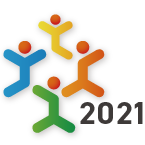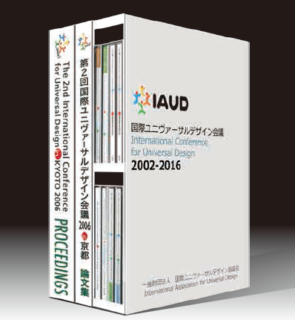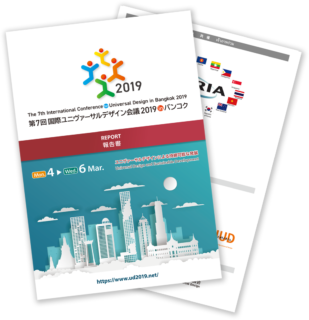2025.05.29
towards2010: From Kyoto to Hamamatsu: reflections on UD 3/3
2010.05.24 Updated
Looking forward to Hamamatsu
In the space of a short, overview article it is not possible to deal with the subjects I have touched on in any depth, however, I think they are all important in providing a framework or lens for our thinking in the run up to the next IAUD Universal Design Conference in Hamamatsu. What I have tried to do here is introduce a series of subjects I think should focus discussion and thinking before, during and after the conference. The big challenge for the UD movement is to find effective ways of integrating responses to these issues and thereby 'normalising' UD as an essential element of good design. We need to maintain the critical position Victor Papanek took when he challenged the validity of egocentric design, but we must also listen to Graham Pullin and harness the power and inventiveness of the best of cutting-edge design. Above all, we have to remember that we live in an increasingly constructed and ‘unnatural’ world that is largely shaped by design, good or bad, and concentrate on mobilising the mass of opinion that will make design exclusion as unacceptable as smoking in the workplace has now become in so many countries.
One of the things I really value about Japanese culture, and something that was very evident to me in what was my first visit to Kyoto, is the ability to see disparate things together and appreciate the tensions and attractions between them, be it two stones on the Go board or the inside and outside of a building, how it sits within its environment, or the equal validity of high craft and humble domestic objects. It seems to me that the western gaze is isolating and reductionist, it tends to deal with things as separate entities, whereas the Eastern gaze is more integrating and holistic. This has an important bearing on UD, for if we see UD through western eyes there is a strong tendency to deal with individual problems, issues or factors, and so to think of age and disability as affecting individuals rather than a community, and to think in terms of individual ‘people with disabilities’ rather than seeing age and disability as part of a continuum – across the lifespan and across communities – and seeing them ‘with’ youth and ability, as enriching aspects of a social collective.
What I have tried to talk about in this short article is the need to think in terms of UD society rather than individual UD products and services – to think at the level of integration rather than separation – and all the subjects I have touched on – evidence-based design in healthcare, design integration, infrastructure and transportation, the synthesis of ‘high’ design and UD, transnational collaboration, research and knowledge transfer, and learning from our past mistakes – are different facets of that picture.
Thank you for letting me share my thoughts with you. I look forward to seeing you all in Hamamatsu.
References:
1. Coleman R. (editor in chief 2009) A Collection of Keynote Addressses: proceedings of the 2nd International Conference on Universal Design in Kyoto 2006, IAUD, Japan.
2. Clarkson P, Buckle P, Coleman R, Stubbs D, Ward J, Jarret J, Lane R & Bound J. (2003) Design for patient safety: a system-wide design-led approach to tackling patient safety in the NHS, Department of Health Publications, London, ISBN 1-84182-765-7
3. Clarkson P, Buckle P, Coleman R, Stubbs D, Ward J, Jarret J, Lane R & Bound J. (2004) Design for patient safety: a scoping study to identify how the effective use of design could help to reduce medical accidents, Engineering Design Centre, University of Cambridge, UK, ISBN 0-9545243-0-62
4. Papanek V. (1971) Design for the Real World, Paladin, UK 1974 edition
5. Pullin G. (2009 Design meets Disability, MIT Press, London.
6. Jan Michl. "[Book review of] Widengren, Gunilla, ed. Tanken och handen: Konstfack 150 år [The Idea and the Hand: University College of Arts, Crafts, Design and Art Education in Stockholm is 150 years]. Stockholm: Page One Publishing 1994." Scandinavian Journal of Design History, vol. 7 : 149-154, 1997
7. Gheerawo, R & Lee Yan Ki. (2009) Enabling People: creating inclusive human-computer interactions, proceedings UACHI 2009, Springer.
Repeating the past – weblinks and short project descriptions
http://www.hhc.rca.ac.uk/976-1327/all/1/Communication_in_transition.aspx
Project with Nokia looking at older people. Key Idea: Older people go through disruptive transitions, not just teenagers.
http://www.hhc.rca.ac.uk/976-1334/all/1/The_sound_of_North.aspx
Using technology to aid wayfinding for visually impaired people. A newer video can be accessed here:http://www.vimeo.com/4783510
http://www.hhc.rca.ac.uk/976-1341/all/1/Seamless_mobility.aspx
Seven new service design concepts for BlackBerry. Key Idea: Work and Life can be seamlessly blended by more clever use of tech
http://www.hhc.rca.ac.uk/1788-1831/all/1/TwoTone_Phone.aspx
Follow-up on BT big button Phone: Key idea: how can broadband best benefit the most digitally excluded (i.e. over 70's)
http://www.hhc.rca.ac.uk/archive/hhrc/programmes/ra/2006/p4.html
Another BlackBerry project. Bends technology to the way families communicate, not the other way around.
http://www.hhc.rca.ac.uk/archive/hhrc/programmes/ra/2005/pX4.html
Balancing the influx of technology with the architecture of the car dashboard.
http://www.hhc.rca.ac.uk/archive/hhrc/programmes/ra/2005/pX1.html
Lighting technology making public spaces more interactive.
http://www.hhc.rca.ac.uk/archive/hhrc/programmes/ra/2005/pX3.html
Digital objects in the home
http://www.hhc.rca.ac.uk/archive/hhrc/programmes/ra/2004/ra04p2.html
User-centred healthcare scenarios for Orange
http://www.hhc.rca.ac.uk/archive/hhrc/programmes/ra/2004/ra04p9.html
Using technology for driverless, low emission vehicles
http://www.hhc.rca.ac.uk/archive/hhrc/programmes/ra/2003/jac.html
Exploratory project with Hewlett Packard looking at visual impairment and memory
http://www.hhc.rca.ac.uk/archive/hhrc/programmes/ra/2002/ednrich2.html
Omron project looking at new uses for sensor technology
http://www.hhc.rca.ac.uk/archive/hhrc/programmes/ra/2001/nick.html
Omron project to enhance personal mobility using sensor technology
http://www.hhc.rca.ac.uk/archive/hhrc/programmes/ra/2000/bryn.html
Working with Dyson to improve the design and interfaces of domestic devices








